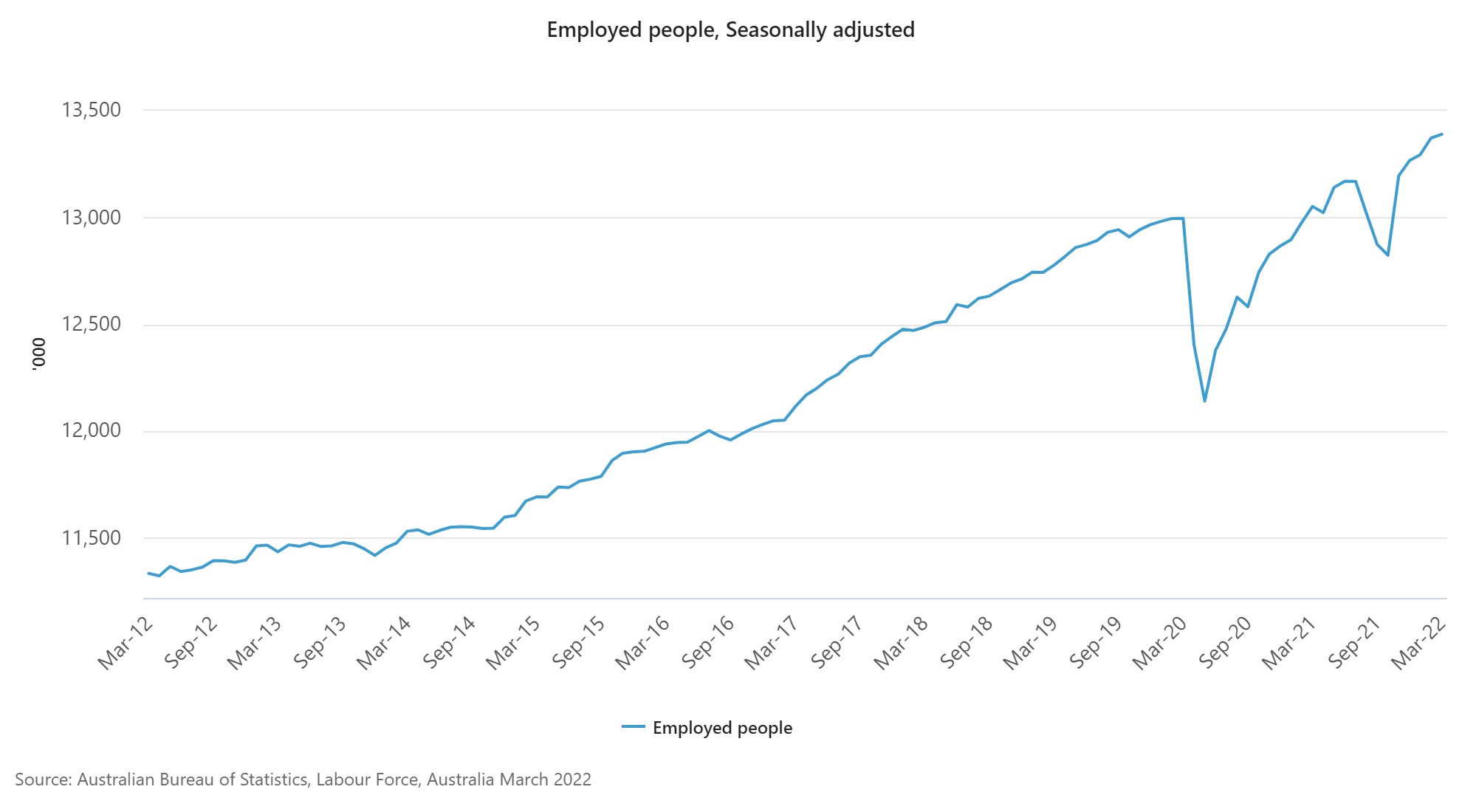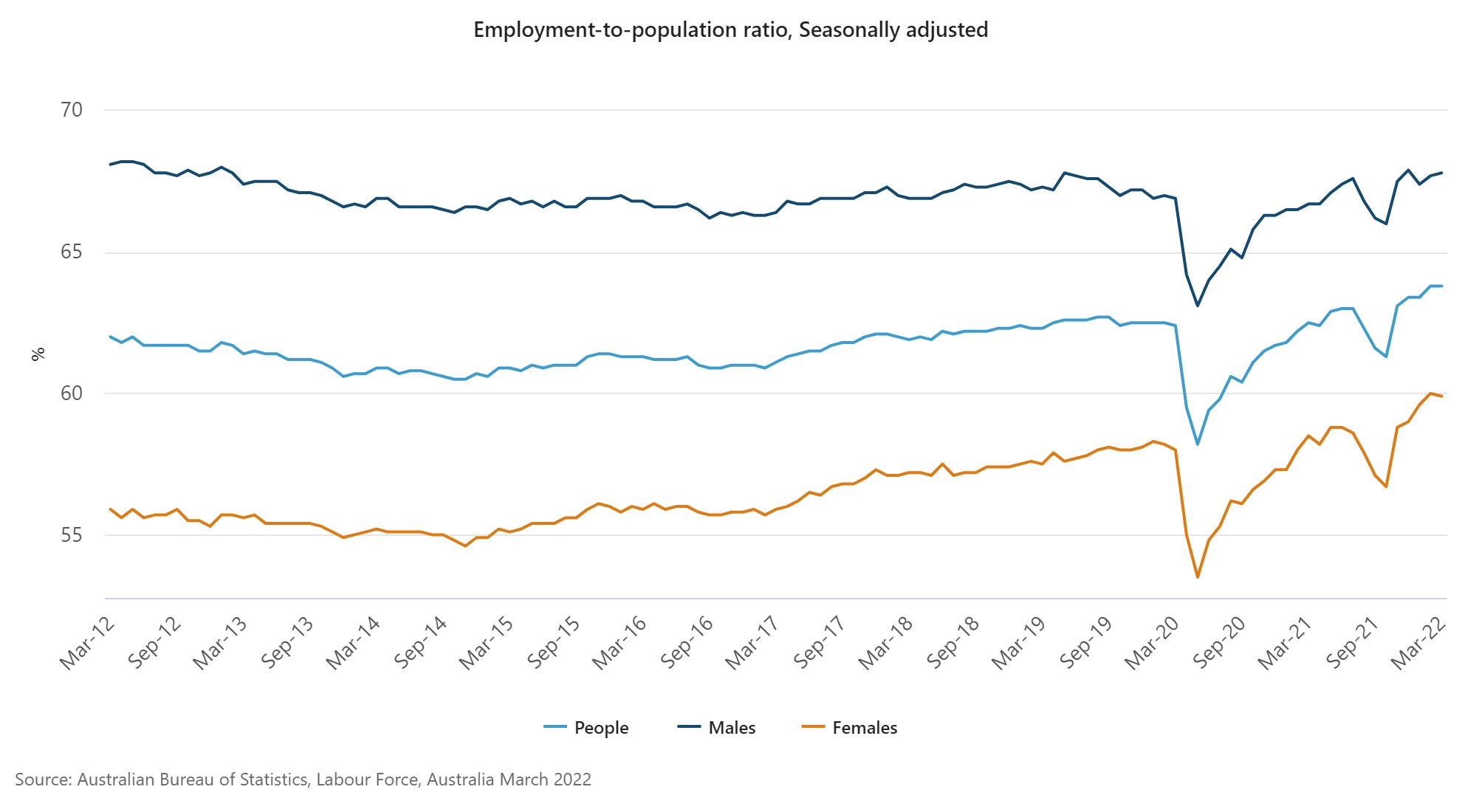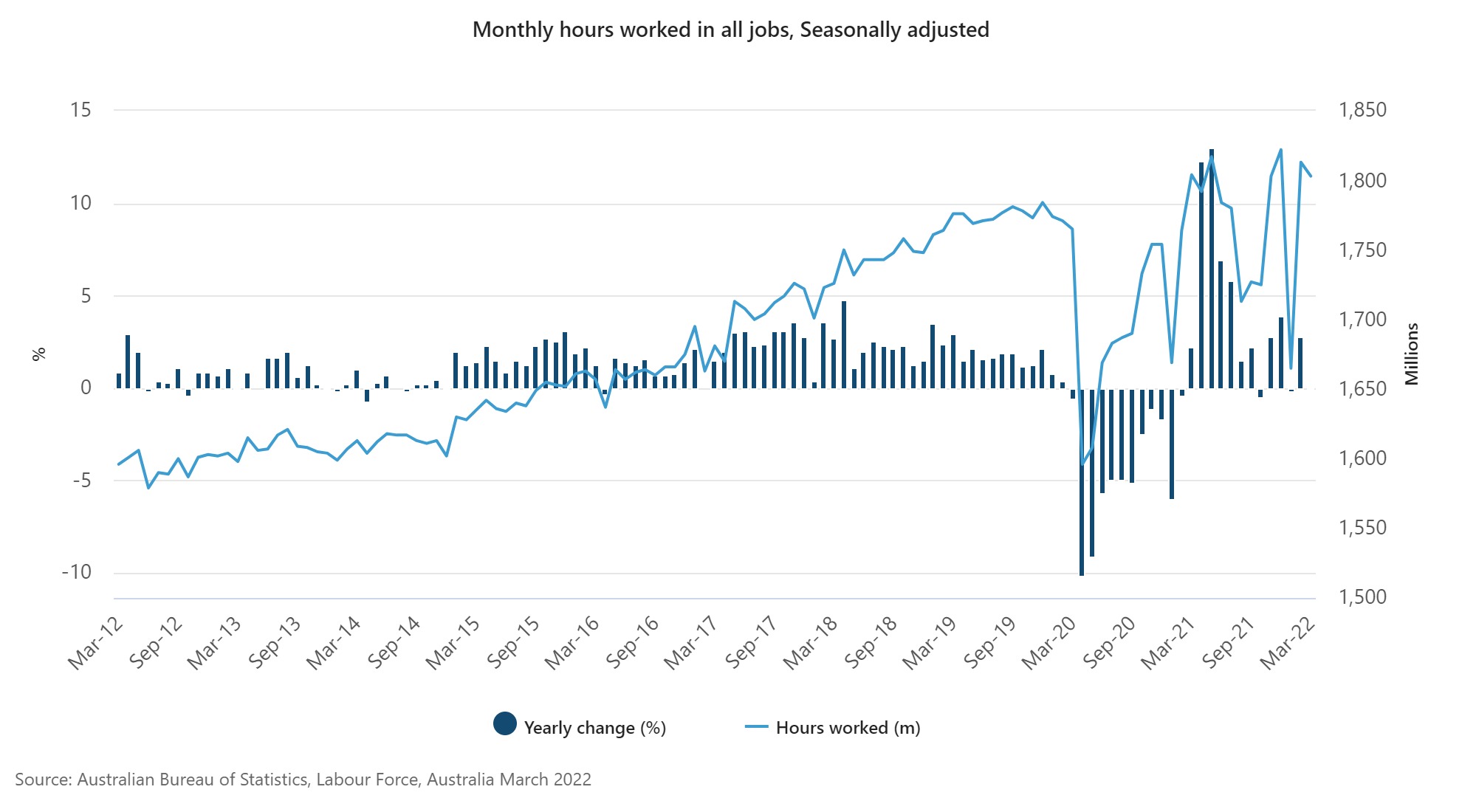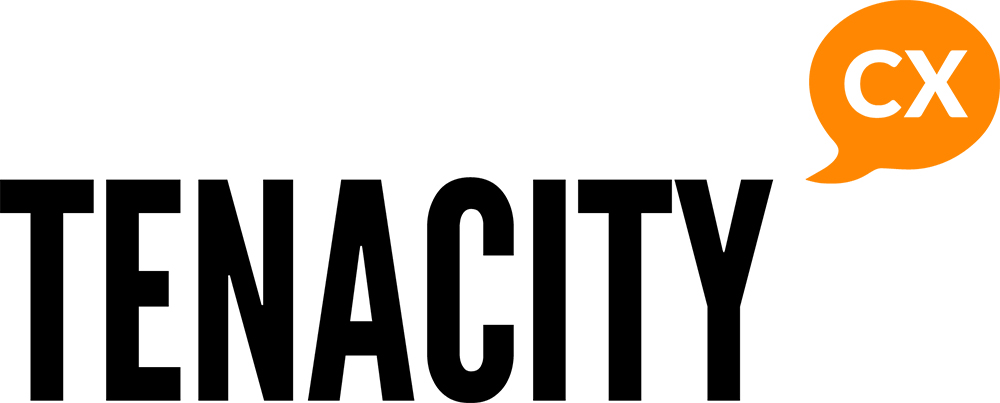When we recently interviewed contact centre and CX leaders for our upcoming report into the future of work, several of them mentioned that they were losing more staff to sickness than to other employers.
One interviewee called it the Great Sickie. And it’s just one of several trends that come out of the Australian job numbers for March 2022.
Great labour statistics mean you still can’t hire
As you’ve likely seen, unemployment is at a record low of 4%, which is one reason it’s difficult to recruit right now. But while the economy added 20,500 full time jobs in March, it actually shed 2,700 part-time roles.

This is not a one-off event but a trend. Since the pandemic the share of part-time jobs has been decreasing in favour of full-time work. We’re seeing it too in the types of roles we are being asked to fill by our clients. This trend is being led by employees not their bosses. Full-time, permanent positions are simply that much more attractive and more secure in times of uncertainty.
TIP – Just because employees want full-time, permanent roles it doesn’t mean they want a traditional 9 to 5 office-based job. Companies that are crushing it in today’s job market (there are some!) are offering all kinds of flexible working conditions to attract and keep the best talent.
Growth in employment led by women
As you would expect given the low unemployment rate, the overall participation rate (percentage of people in the country who are employed) has bounced back from its pandemic lows and then some.

What’s interesting is that the participation rate for men is about the same as it was in March 2020. Nearly all of that new growth in employment numbers has come from women, who are participating in the job market at record rates.
The advent of genuine flexible working conditions and working from home are demolishing at least some of the barriers that have prevented many women from participating in the job market.
TIP – Women represent 50% of the nation’s talent and energy, so make sure you’re recruiting to them. Instead of expecting employees to flex to your needs, you should be building roles around the right talent, when you find it, by offering personalised job roles and working arrangements. So, sit down with your workforce planning team and see if you can offer customised schedules that allow your staff to fit work around their other commitments. You will open up your recruitment campaigns to a whole new world of talent.
The Great Sickie is probably here to stay
Despite a record number of people in work, a record participation rate, and the lowest underemployment rate for some time, the number of hours worked in March paradoxically fell by 10 million.

Which is nothing compared to January, which saw a drop of 157 million working hours from December! Almost everyone we interviewed recently for our upcoming future of work report told us they had experienced that in their own contact centres and offices.
As the graph shows, what we’re actually seeing is increased volatility in the hours worked each month. This is due to a combination of increased sick levels as COVID infection rates rise and fall, and also economic factors which lead companies to stand staff down or temporarily reduce their hours.
TIP – Staff not being able to work their rostered hours throws a spanner into the works of any contact centre. Protect yourself from increased volatility in hours worked by ensuring that everyone who can is set up to work from home. It’s not just about COVID, during flu and cold season millions of hours of work are lost. Ensuring contagious staff don’t come into the office prevents these illnesses from spreading throughout your workforce.
I hope you find that quick analysis useful. For a (much!) deeper dive into the Australian job market don’t forget to pre-register to receive our upcoming Future of Work in the Contact Centre and CX Industry report.

